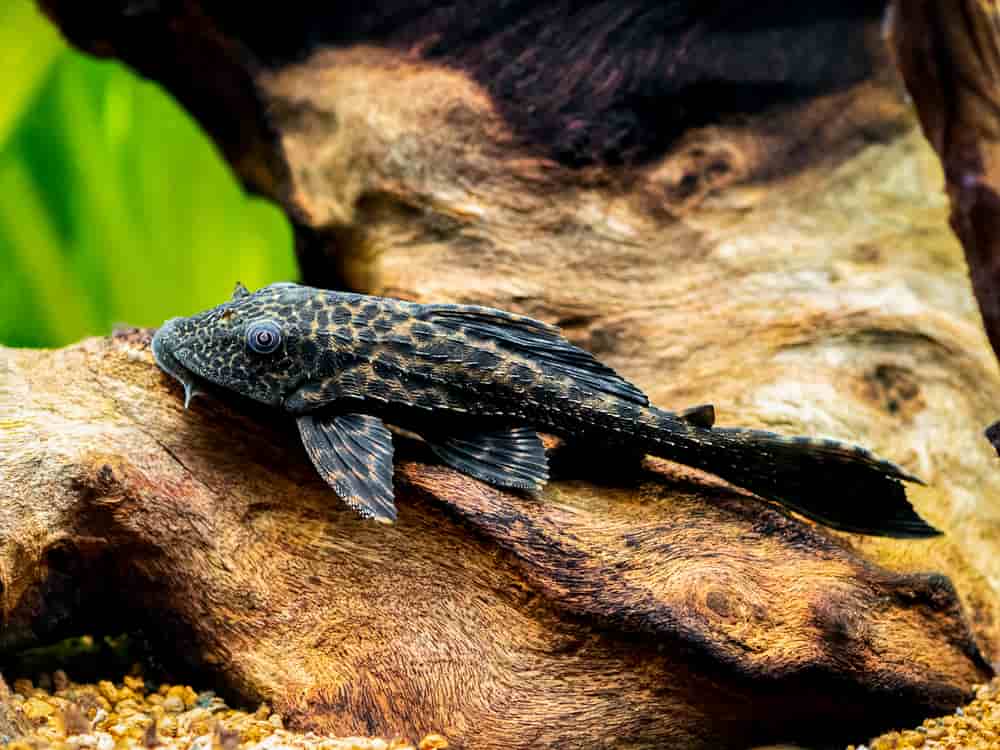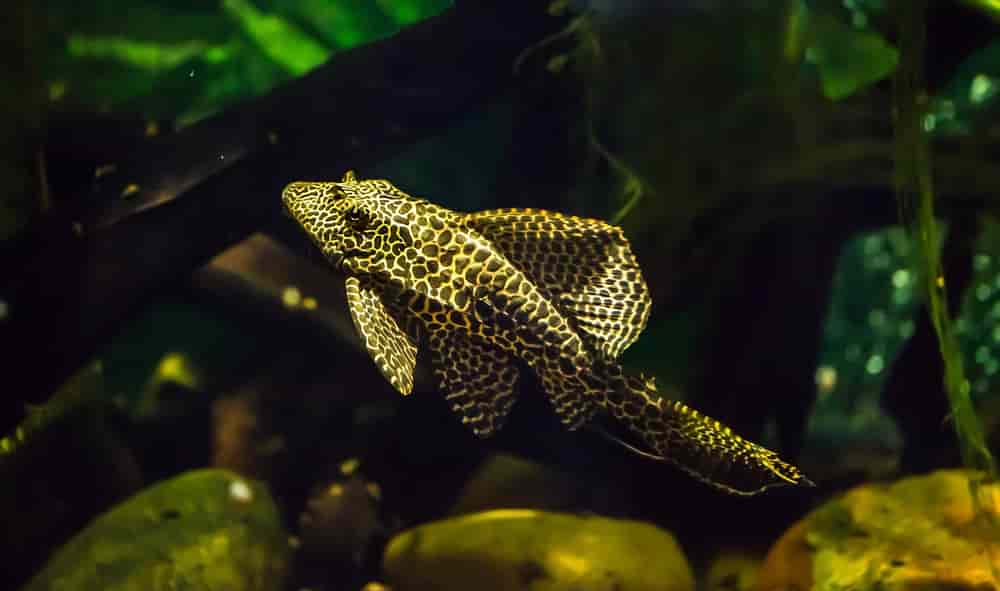Consider adding a unique and beneficial sucker fish to your aquarium for a distinct touch. Sucker fish are a group of fish that belong to the family Loricariidae, also known as the armored catfish. They’re named sucker fish due to their mouth’s ability to attach and suction algae, detritus, and organic matter. Known for breathing air through their intestines, they thrive in low-oxygen environments.
Sucker fish are popular among aquarium enthusiasts because they can help keep the tank clean and healthy. They can also add some diversity and interest to your aquatic community. However, before you decide to get a sucker fish for your aquarium, there are some things you need to know. In this blog post, we will cover the following topics:
- The different types of sucker fish and how to choose the best one for your tank.
- The benefits and drawbacks of having a sucker fish in your aquarium.
- The care and maintenance tips for keeping your sucker fish happy and healthy.
- The common problems and diseases that can affect your sucker fish and how to prevent and treat them.
Types of Sucker Fish and How to Choose the Best
One for Your Tank
There are over 800 species of sucker fish, but not all of them are suitable for aquariums. Some of them can grow very large, up to 2 feet or more, and require a lot of space and special conditions. Others may have specific dietary or environmental needs that are hard to meet in captivity. Therefore, it is important to do some research and choose the best type of sucker fish for your tank.

Some of the most common and popular types of sucker fish for aquariums are:
- Plecostomus: Plecostomus, or plecos for short, are the most widely available and diverse type of sucker fish. They come in various sizes, shapes, colors, and patterns. Some of the most popular plecos are the common pleco, the bristlenose pleco, the clown pleco, and the zebra pleco. Plecos are generally peaceful and can coexist with most other fish, but they can be territorial and aggressive towards their own kind. They also need a lot of hiding places, such as driftwood, rocks, and caves, to feel secure and comfortable. Plecos are omnivorous and will eat algae, plants, and meaty foods, but they also need some wood in their diet to aid their digestion.
- Otocinclus: Otocinclus, or otos for short, are small and cute sucker fish that are ideal for nano tanks and planted tanks. They are very peaceful and social and prefer to live in groups of at least 6. They are also very efficient algae eaters and will graze on the surfaces of plants, glass, and decorations. Otos are herbivorous and will need a steady supply of algae and vegetable matter, such as algae wafers, blanched vegetables, and spirulina. They are also sensitive to water quality and need frequent water changes and good filtration.
- Siamese Algae Eater, or SAE, are medium-sized suckers with a keen appetite for algae, especially black beard algae. Active and peaceful, Siamese Algae Eaters coexist well with most fish but may chase or nip at slow-moving or long-finned species. SAE are omnivorous and will eat algae, plants, and meaty foods, such as flakes, pellets, bloodworms, and brine shrimp. They also need some open space and moderate water flow in their tank.
These are just some of the examples of sucker fish that you can choose for your aquarium. There are many other types, such as whiptail catfish, hillstream loach, farlowella, and more. When choosing a sucker fish, you should consider the following factors:
- The size and compatibility of the sucker fish with your tank and other fish
- The diet and nutrition of the sucker fish and how to provide it
- The water parameters and temperature of the sucker fish and how to maintain them
- The personality and behavior of the sucker fish and how to accommodate them
Benefits and Drawbacks of Having a Sucker Fish in Your Aquarium
Having a sucker fish in your aquarium can have both benefits and drawbacks. Here are some of the pros and cons of keeping a sucker fish:
Pros
- Sucker fish can help keep your tank clean and healthy by eating algae, detritus, and other organic matter that can cause water quality issues and diseases.
- Sucker fish can add some diversity and interest to your aquatic community by providing different shapes, colors, and patterns.
- Sucker fish can be fun and rewarding to watch and interact with, as they have unique and fascinating behaviors and personalities.
Cons
- Sucker fish can produce a lot of waste and bioload, which can affect the water quality and require more frequent water changes and filtration.
- Sucker fish can damage or uproot your plants and decorations, as they can be clumsy and voracious.
- Sucker fish can be difficult to feed and care for, as they can have specific dietary or environmental needs that are hard to meet in captivity.

Care and Maintenance Tips for Keeping Your Sucker Fish Happy and Healthy
If you decide to get a sucker fish for your aquarium, you will need to provide them with proper care and maintenance to keep them happy and healthy. Here are some of the basic tips for caring for your sucker fish:
- Tailor tank size to sucker fish type and number, ensuring at least 10 gallons per fish, more for larger or active species. Create secure hiding spots with driftwood, rocks, and caves. You will also need to have a good filter, heater, and air pump to maintain the water quality and temperature.
- Feed them with a varied and balanced diet, depending on the type and preference of your sucker fish. Generally, you will need to feed them once or twice a day, and provide them with both algae and meaty foods, such as algae wafers, flakes, pellets, bloodworms, brine shrimp, and blanched vegetables. You will also need to supplement their diet with some wood, such as driftwood or almond leaves, to aid their digestion. You will also need to monitor their feeding and make sure they are not overfed or underfed, as this can cause health problems and aggression.
- Perform regular water changes and testing, depending on the bioload and water parameters of your tank.
Weekly water changes (25-50%) and regular testing for ammonia, nitrite, nitrate, pH, and hardness are crucial. Maintain stable parameters tailored to your sucker fish type, keeping temperature (72-82°F), pH (6.5-7.5), and hardness (5-15 dGH) in optimal ranges. - Observe and monitor your sucker fish regularly and look for any signs of stress, illness, or injury. Some of the common signs of stress are hiding, lethargy, loss of appetite, and erratic behavior.
Recognize signs like clamped fins, cloudy eyes, bloated belly, spots, wounds, or parasites. Isolate and treat affected sucker fish based on severity and cause. You may also need to consult a veterinarian or an expert for advice and guidance.
Common Problems and Diseases that Can Affect Your Sucker Fish and How to Prevent and Treat Them
Sucker fish are generally hardy and resilient, but they can still be affected by some common problems and diseases that can affect their health and well-being. Here are some of the common problems and diseases that can affect your sucker fish and how to prevent and treat them:
Algae deficiency occurs when sucker fish lack sufficient algae in their diet, leading to malnutrition. This may result from insufficient natural algae growth or competition with other algae eaters. To prevent and treat this, offer algae-rich foods like algae wafers, blanched vegetables, and spirulina. Additionally, manage the number of algae eaters in your tank or provide separate feeding areas.
Bacterial infections in sucker fish, caused by contaminated water, food, or injuries, lead to issues like fin rot and septicemia. Prevent with tank cleanliness, regular water changes, and antibiotics tailored to infection type.- Sucker fish are vulnerable to fungal infections in dirty, cold, or stagnant water. Common issues are cotton wool disease, fish fungus, and ich. Prevent and treat with a clean tank, regular water changes, and antifungal medications like malachite green, methylene blue, or salt, chosen based on infection type and severity.
- Parasitic infections: Parasitic infections are caused by harmful parasites that can attach to your sucker fish and feed on their blood, skin, or organs. Some of the common parasitic infections that can affect your sucker fish are anchor worms, gill flukes, and velvet disease. Prevent parasitic infections by quarantining new additions and regularly inspecting sucker fish. Treat with antiparasitic medications like praziquantel, levamisole, or copper as needed.
These are some of the common problems and diseases that can affect your sucker fish and how to prevent and treat them. However, this is not an exhaustive list, and there may be other issues that can arise. Therefore, it is always advisable to do your own research and consult a veterinarian or an expert if you have any doubts or concerns about your sucker fish.
Conclusion
Sucker fish enhance aquariums, aiding in tank cleanliness and diversity. Proper care, suitable tank conditions, balanced diets, regular testing, and observation ensure their long-term health.
FAQs
A cleaner fish, like the popular Corydoras catfish, helps maintain a tank by consuming debris, algae, and uneaten food.
Sucker fish, often called plecos or algae eaters, possess specialized mouthparts to attach to surfaces and clean aquariums by consuming algae.
Sucker fish, such as plecos, typically live 10-15 years in aquariums when provided with proper care, diet, and environment.